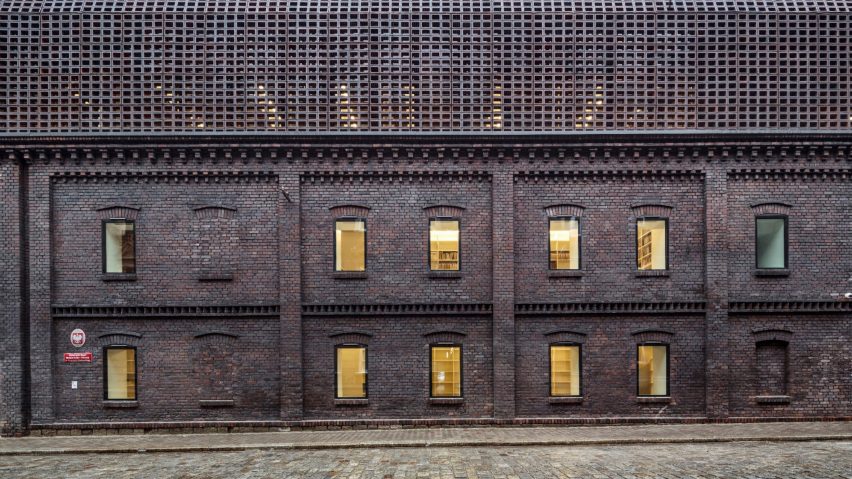Dezeen promotion: an Indian library and a prototype house in Rwanda are among the winners at this year's Brick Award, with a university building in Poland taking the top prize.
Organised by brick company Wienerberger, the biennial award aims to celebrate "outstanding brick architecture from all around the world," with a record 644 projects entered for Brick Award 20.
Prizes were given in five categories – Feeling at home, Living together, Working together, Sharing public spaces and Building outside the box – with the Grand Prize Winner chosen from category-winning schemes.
"The Brick Award provides architects from all over the world with an opportunity to showcase their latest creative projects of innovative brick architecture," said Wienerberger CEO Heimo Scheuch.
"It aims to inspire architects and people alike, to share design concepts and to explore new ways of building. 2020 marks the ninth time that Wienerberger is presenting this internationally established award."
This year's Grand Prize was given to Spanish studio BAAS Arquitectura's Faculty of Radio and Television at the University of Silesia, which the studio designed with Polish studios Grupa 5 Architekci and Małeccy Biuro Projektowe.
The project, which also won the Sharing public spaces category, saw the studios wrap an existing brick facade of a coalworker's house in openwork brickwork of the same colour as the historical building.
"A radical, yet subtle approach seemingly elevates the existing historic fabric of a Katowice street imbued with Silesian coal history," said the Brick Award jury.
In the Building outside the box category, Sameep Padora & Associates was named the winner for the curved brick roof of an extension to a children's library in the Indian town of Kopargaon.
To create the fluid roof form that appears to grow out of the ground, the studio looked at the forms of vaulted brick ceilings found in Catalonia.
"This innovative project is exactly what this prize is about," said the Brick Award jury. "The project has used bricks in an unconventional way shaping the roof of the library as a floating landscape and a playground for the school and at the same time embracing the library functions."
In the Living together category, Prototype Village House near the capital of Rwanda was named the winner. Designed by architect and associate professor of architecture at MIT Rafi Segal and the Rwanda Housing Authority, the brick house was designed to be a model for low-cost rural housing in the country's rural areas.
"This sustainable house was designed as a prototype for affordable housing, whose modern and efficient architecture has been tailor-made for the local needs in Rwanda," explained the Brick Award jury.
A photography studio for the Mexican artist Graciela Iturbide designed by Taller Mauricio Rocha and Gabriela Carrillo was the winner in the Feeling at home category.
While a holiday home in Mallorca named Can Jaime I n'Isabelle, which was completed by TEd'Aarquitectes, was named a special prize winner in the category.
Finally, the City Archive Delft by Office Winhov and Gottlieb Paludan Architects was awarded the Working together category win. Built on the edge of a park near Delft city centre, the building's facade has a decorative relief pattern that looks like bookshelves.
This year's six winners will be featured in a book called Brick 20, alongside 44 other innovative shortlisted projects
The Brick Award has been organised by brick company Wienerberger for almost two decades. It is an independent award and the use of Wienerberger products is not a decisive fact of participation.

